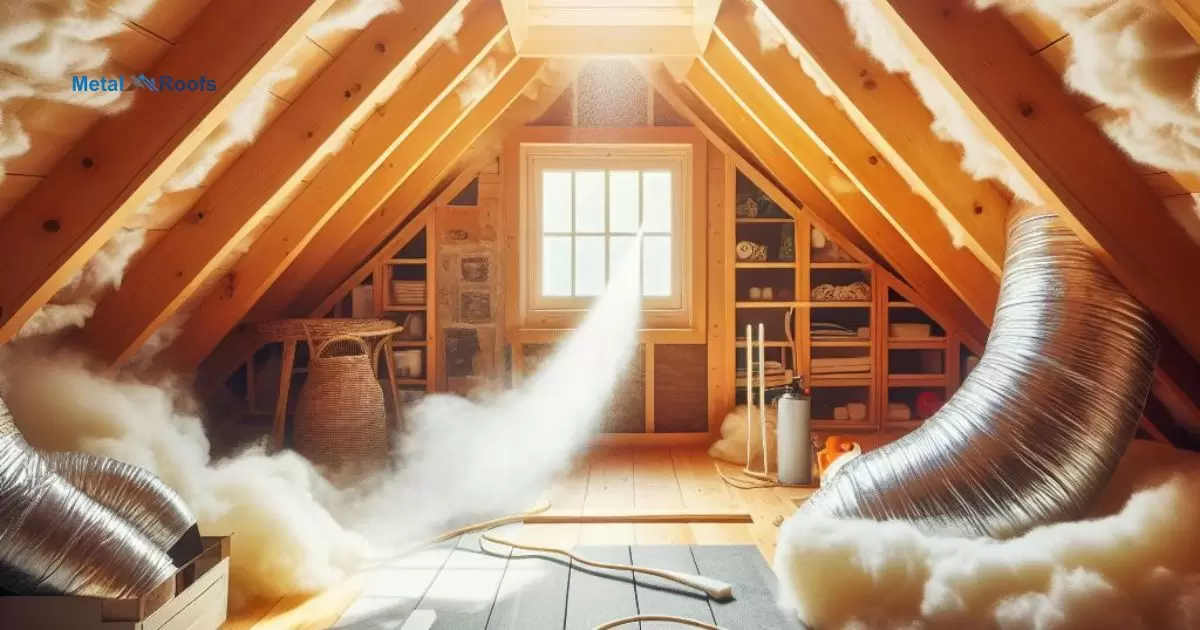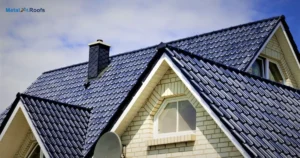Attic ventilation with spray foam insulation enables airflow to control moisture while sealing gaps, lowering energy costs. Proper professional installation ensures optimal performance and safety.
Attics get hot and stuffy. Do you need attic ventilation with spray foam insulation? Yes, you do. Proper ventilation prevents moisture buildup. Spray foam seals gaps, reducing energy costs. Combining both provides comfort and savings. Installation by professionals is crucial for optimal results.
Attic ventilation and spray foam insulation work together. Ventilation removes moisture. Spray foam seals and insulates. Proper installation is key. Benefits include energy savings and comfort.
Key Takeaways
- Attic ventilation is necessary with spray foam insulation.
- It helps control moisture, regulate temperature, and prevent ice dams.
- Proper installation by professionals ensures effective ventilation alongside spray foam.
What is Spray Foam Insulation?
Spray foam insulation is a type of insulation commonly used in buildings. It’s applied as a liquid, which then expands and hardens into a solid foam. This foam fills gaps and seals cracks in walls, ceilings, and attics, providing effective insulation. This type of insulation helps to keep buildings warmer in winter and cooler in summer by reducing heat transfer.
Spray foam insulation can also help with moisture control, reducing the risk of mold and mildew growth. Metal roofing, cheaper than shingles, offers durability and longevity, making it a cost-effective choice.
Benefits of Spray Foam Insulation
Spray foam insulation offers several benefits, including:
Energy efficiency: Spray foam creates an air-tight seal, reducing air leakage and improving the energy efficiency of a building. This can lead to lower heating and cooling costs.
Improved indoor air quality: Spray foam helps prevent pollen and allergens from entering the building, improving indoor air quality.
Moisture control: Spray foam insulation can help prevent moisture infiltration, which can reduce the risk of mold growth and water damage.
Noise reduction: Spray foam can help reduce noise transmission, making the indoor environment quieter and more comfortable.
Durable and long-lasting: When properly installed, spray foam insulation can last for many years without needing replacement.
Environmentally friendly: Some spray foam insulation products are made from renewable resources and can help reduce energy consumption, making them environmentally friendly options.
Improved structural integrity: Spray foam insulation can help improve the structural integrity of a building by adding strength and stability to the walls and roof.
Versatility: Spray foam insulation can be used in various applications, including walls, roofs, and attics, making it a versatile option for different types of buildings.
Attic Ventilation Why It Matters
| Attic Ventilation | Why It Matters |
| Controls moisture | Prevents mold and mildew growth |
| Regulates temperature | Helps extend the life of the roof |
| Improves indoor air quality | Reduces potential for ice dams in winter |
| Removes excess heat | Maintains comfort levels in the home |
Attic ventilation matters for a few key reasons. Firstly, it controls moisture, preventing mold and mildew. Without it, your attic can become damp and unhealthy. Secondly, it regulates temperature, keeping your home more comfortable. In hot weather, ventilation stops the attic from becoming a heat trap.
And in cold weather, it helps prevent ice dams on the roof. Professional installation ensures it’s done right alongside insulation. So, attic ventilation matters for a healthier, more comfortable home.
The Role of Attic Ventilation?

It controls moisture, regulates temperature, and prevents issues like ice dams. Without proper ventilation, problems can arise. Mold and mildew may thrive in a damp attic. Excessive heat buildup during hot weather can strain HVAC systems.
In colder climates, ice dams can damage the roof. To avoid these issues, ensure your attic has adequate ventilation. Professional installation ensures effectiveness alongside insulation.
Spray Foam Insulation and Attic Ventilation
Spray foam insulation seals the attic, but ventilation is still crucial. It controls moisture, preventing mold and mildew. Proper ventilation regulates attic temperature, especially in hot weather. In colder climates, it prevents ice dams from forming on the roof.
Professional installation ensures effective ventilation with spray foam. It maintains a healthy and efficient attic space. Ventilation alongside spray foam is essential for a balanced attic environment.
When Is Attic Ventilation Necessary with Spray Foam?
Attic ventilation remains essential when using spray foam insulation. It helps manage moisture, control temperatures, and prevent issues like ice dams. Even though spray foam seals well, moisture can still accumulate, making ventilation crucial for a healthy attic.
Professionals ensure proper installation to maintain efficient airflow alongside spray foam insulation. It’s a key step in ensuring your attic remains dry and well-regulated throughout the year.
Unvented Attic Assemblies
Unvented attic assemblies are a modern approach to insulation. They utilize spray foam to seal the attic space, reducing air movement. This sealing helps control moisture, regulate temperature, and prevent ice dams.
Professional installation ensures proper ventilation alongside the spray foam. It’s essential for maintaining a healthy and efficient attic space.
Building Code Requirements

Building code requirements dictate certain standards that must be followed when constructing or renovating a building. These codes ensure safety, durability, and efficiency in structures. They cover aspects such as structural integrity, fire safety, accessibility, and energy efficiency.
Failure to comply with building codes can result in fines, delays, or even the need for costly corrections. It’s essential for builders and contractors to stay updated on current building codes and adhere to them diligently.
By following these requirements, buildings can be constructed to high standards, providing safe and comfortable spaces for occupants while also minimizing environmental impact.
Moisture Management
Moisture management is crucial in any home. Without proper control, moisture can lead to mold and mildew. With spray foam insulation, it’s vital to ensure moisture doesn’t accumulate in the attic. Ventilation helps remove excess moisture, keeping the attic dry. This prevents potential damage and health hazards.
Effective moisture management also regulates humidity levels. High humidity can cause discomfort and damage materials. Proper ventilation ensures humidity levels remain balanced. This promotes a healthier indoor environment and prolongs the lifespan of your home.
Energy Efficiency Considerations
When considering energy efficiency, it’s crucial to focus on insulation. Proper insulation, such as spray foam, can significantly reduce energy consumption by keeping the home’s temperature stable. Sealing any gaps and leaks in doors, windows, and ductwork helps prevent energy wastage.
Energy-efficient appliances and lighting also play a key role in reducing electricity usage. Lastly, incorporating renewable energy sources like solar panels can further decrease reliance on traditional energy sources. By prioritizing these considerations, homeowners can lower their energy bills and reduce their environmental impact.
Heat Buildup in the Attic
In the attic, heat can build up quickly, especially during hot weather. This heat buildup can strain HVAC systems and lead to discomfort indoors. Without proper ventilation, the attic becomes a heat trap, making it harder to cool your home efficiently.
To address this issue, ensuring adequate attic ventilation is crucial. Proper ventilation allows hot air to escape, preventing excessive heat buildup. This not only improves indoor comfort but also helps extend the lifespan of roofing materials by reducing temperature extremes.
Frequently Asked Questions
Is ventilation required for spray foam insulation?
Yes, ventilation is crucial with spray foam insulation. It controls moisture, regulates temperature, and prevents ice dams, ensuring effective installation.
How does a house breathe with spray foam insulation?
Spray foam insulation seals a house tightly, but controlled ventilation systems and natural air movement still allow for proper air circulation and moisture control.
Do you need an air gap with spray foam insulation?
No, an air gap is not needed with spray foam insulation because it creates a tight seal.
Conclusion
Proper attic ventilation and spray foam insulation offer significant benefits. Ventilation prevents moisture buildup and extends roofing life. Spray foam seals gaps, reducing energy costs. Combined, they improve comfort and savings. Professional installation ensures optimal performance.
Don’t neglect your attic’s ventilation and insulation needs. Invest in quality spray foam and adequate ventilation. Hire experienced professionals for installation. Enjoy a comfortable, energy-efficient home. Protect your investment with proper attic care.











